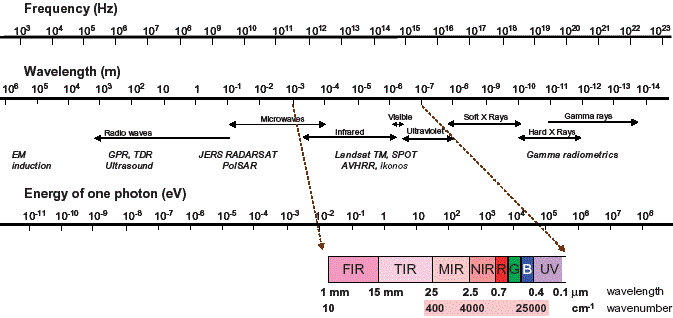Viscarra Rossel,R.A., Walvoort,D.J.J.,
McBratney,A.B., Janik,L.J. and Skjemstad,J.O.(2006): Visible,
near infrared, mid infrared or combined diffuse reflectance spectroscopy
for simultaneous assessment of various soil properties. Geoderma,
131, 59-75.
『さまざまな土壌特性の同時評価のための、可視光、近赤外線、中赤外線、または組合せの拡散反射率分光法』
『Abstract
Historically, our understanding of the soil and assessment of
its quality and function has been gained through routine soil
chemical and physical laboratory analysis. There is a global thrust
towards the development of more time- and cost-efficient methodologies
for soil analysis as there is a great demand for larger amounts
of good quality, inexpensive soil data to be used in environmental
monitoring, modelling and precision agriculture. Diffuse reflectance
spectroscopy provides a good alternative that may be used to enhance
or replace conventional methods of soil analysis, as it overcomes
some of their limitations. Spectroscopy is rapis, timely, less
expensive, non-destructive, straightforward and sometimes more
accurate than conventional analysis. Furthermore, a single spectrum
allows for simultaneous characterisation of various soil properties
and the techniques are adaptable for ‘on-the-go’ field use. The
aims of this paper are threefold: (i) determine the value of qualitative
analysis in the visible (VIS) (400-700 nm), near infrared (NIR)
(700-2500 nm) and mid infrared (MIR) (2500-25,000 nm); (ii) compare
the simultaneous predictions of a number of different soil properties
in each of these regions and the combined VIS-NIR-MIR to determine
whether the combined information produces better predictions of
soil properties than each of the individual regions; and (iii)
deduce which of these regions may be best suited for simultaneous
analysis of various soil properties. In this instance we implemented
partial least-squares regression (PLSR) to construct calibration
models, which were independently validated for the prediction
of various soil properties from the soil spectra. The soil properties
examined were soil pHCa, pHw,
lime requirement (LR), organic carbon (OC), clay, silt, sand,
cation exchange capacity (CEC), exchangeable calcium (Ca), exchangeable
aluminium (Al), nitrate-nitrogen (NO3-N),
available phosphorus (PCol), exchangeable
potassium (K) and electrical conductivity (EC). Our results demonstrated
the value of qualitative soil interpretations using the loading
weight vectors from the PLSR decomposition. The MIR was more suitable
than the VIS or NIR for this type of analysis due to the higher
incidence spectral bands in this region as well as the higher
intensity and specificity of the signal. Quantitatively, the accuracy
of PLSR predictions in each of the VIS, NIR, MIR and VIS-NIR-MIR
spectral regions varied considerably amongst properties. However,
more accurate predictions were obtained using the MIR for pH,
LR, OC, CEC, clay, silt and sand contents, P and EC. The NIR produced
more accurate predictions for exchangeable Al and K than any of
the ranges. There were only minor improvements in predictions
of clay, silt and sand content using the combined VIS-NIR-MIR
range. This work demonstrates the potential of diffuse reflectance
spectroscopy using the VIS, NIR and MIR for more efficient soil
analysis and the acquisition of soil information.
Keywords: Soil analysis; Diffuse infrared reflectance spectroscopy;
Visible spectroscopy; NIR; MIR partial least-squares regression
1. Introduction
2. Materials and methods
2.1. Soil sampling and laboratory analyses
2.2. Spectral analyses
2.3. Spectral data management
2.4. Chemometric analysis
2.4.1. Partial least-squares regression (PLSR)
2.4.2. Selection of the optimal PLSR calibration model
2.4.3. PLSR model predictions - validation
3. Results and discussion
3.1. Laboratory analysis
3.2. Qualitative description of the spectral data
3.3. Multivariate analysis using partial least-squares regression
(PLSR)
3.4. Comparison of cross-validated predictions using VIS, NIR,
MIR and combined VIS-NIR-MIR spectra
4. Conclusion
References

Fig. 1. The electromagnetic (EM) spectrum highlighting the visible
and infrared portions (after McBratney et al., 2003).
〔Viscarra Rossel,R.A., Walvoort,D.J.J., McBratney,A.B., Janik,L.J.
and Skjemstad,J.O.(2006): Visible, near infrared, mid infrared
or combined diffuse reflectance spectroscopy for simultaneous
assessment of various soil properties. Geoderma, 131,
59-75.から〕 |
戻る
